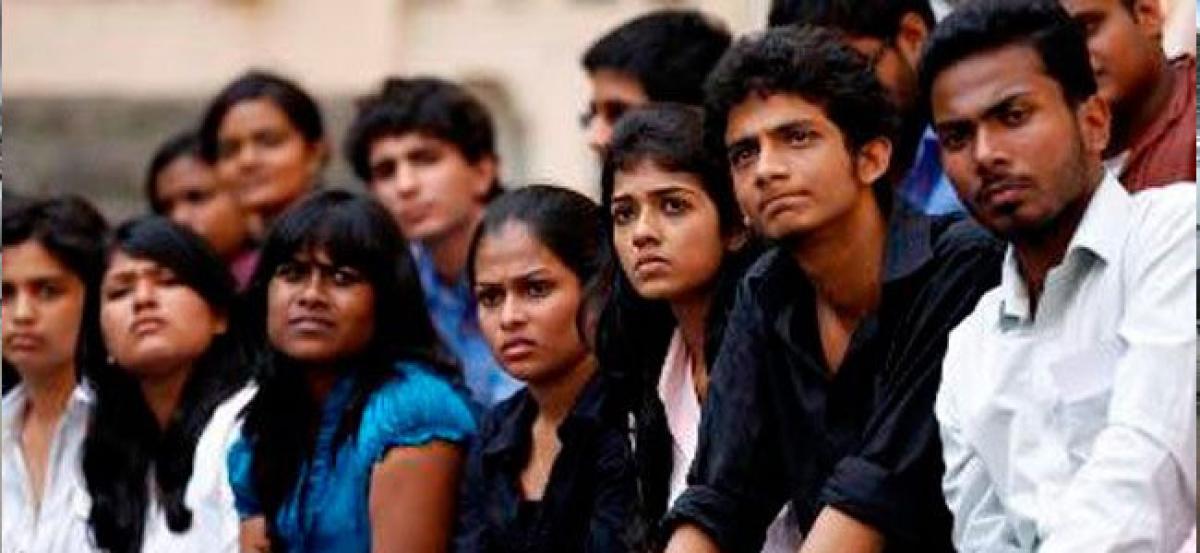Live
- Grand Celebration of the 18th Mahapadi Puja held at Shamshabad Ayyappa Temple
- MLA Sri Ganesh distributes cheques to beneficiaries under CMRF
- BGT: Do feel for Nathan, but totally understand why Australia dropped him, says Vaughan
- PM Modi accorded Guard of Honour at Kuwait's Bayan Palace
- Sports Minister flags off ‘Fit India Sundays on Cycle' initiative
- Brunei cracks down on activities of international drug cartel
- Peace and development in Tripura, says HM Shah after meeting Reang tribals
- Two terror associates arrested with arms, ammunition in J&K’s Sopore
- L-G Saxena visits Delhi areas, says people's plight pathetic
- As temperatures drop to minus 8 in Kashmir, CM Omar Abdullah rushes back
Just In

When Infosys founder NR Narayana Murthy says the trend of stagnation of starting salaries for software engineers for six to seven years is \"worrisome\", we should be nervous. What does it imply for the job market? It\'s only a handful of engineering graduates who get six-digit dollar offers.
When Infosys founder NR Narayana Murthy says the trend of stagnation of starting salaries for software engineers for six to seven years is "worrisome", we should be nervous. What does it imply for the job market? It's only a handful of engineering graduates who get six-digit dollar offers.
As you look beyond the top 200 colleges in India, the number of placements is down dramatically over the past few years. Simply put, there are more engineering seats in Indian colleges than students, and there are more graduates than there are jobs.
The demand-supply gap is worse in engineering schools in tier 2 and tier 3 cities. Very few recruiters approach these colleges because they are remotely located, even knowing it would mean missing out on brilliant talent.
The news of a revival of economic indices -- manufacturing, core sector expansion, merchandise exports -- is buttressed by anecdotal references to Tata Steel and infrastructure major L&T seeing a demand surge from fast-tracked infrastructure projects. The IT sector, which once absorbed engineers like a sponge does water, expects the addition of only 200,000 new jobs in 2018, in the face of a series of protectionist moves being brought in by the US, the biggest market for the $150 billion sunrise sector.
Analysts say new job openings in digital technologies, e-commerce and Artificial Intelligence (AI) in the domestic IT sector can at best add between 50,000 to 100,000 in a country that produces a million engineering graduates each year.
Everyone is worried -- students, parents, college managements, including the engineering and management education accrediting body, the All India Council for Technical Education (AICTE). In fact, AICTE has since last year mandated that all engineering colleges should let their students participate in a semester-long internship in industry.
The rapid growth of colleges in engineering and management created an excess capacity in most streams in the past. These colleges now have the flexibility to discontinue streams that don't attract enough students and start programmes in emerging technologies while using the same infrastructure, much along the lines of broad-banding of manufacturing capacity.
The AICTE is monitoring engineering colleges that are not attracting enough students and where output quality is suspect in terms of learning outcomes. Closure of 300 such colleges is already on the cards. This move will check the oversupply of engineering seats in the country going forward.
Simultaneously, AICTE has reached out to assessment platforms like HireMee to assess engineering students to discover aptitude, logical reasoning, communication and core technical skills. This will help potential employers to access students from lesser-known, difficult-to-reach engineering colleges for suitable job openings. This project for social good can lead to a democratisation of job opportunities as it comes without any cost, either to students or the colleges.
The results of a proctored computer-assisted test by HireMee using a comprehensive assessment framework will present to recruiters different dimensions of personality and behavioural styles.
The government is equally committed to help identify the top 20 higher education institutions of eminence to achieve excellence on a global level and empower them with the wherewithal to compete with their international counterparts.
These institutions will be free to enter academic collaboration with the top 500 institutions in the world, enjoy flexibility, fix course structure, curriculum and syllabi. The scheme will enable Indian students to get world-class education and research facilities within the country.
The education policymakers are equally convinced that the curriculum has to be in tune with the market needs and, therefore, the rate of change of curriculum has to keep pace with the new technology, subjects and skills that are needed today. This is where behavioural assessment can play a big role in checking suitability for jobs.
The recent FICCI, EY and Nasscom report on "Future of Jobs in India" says that by 2022 nine per cent of India's estimated 600 million work force will be deployed in new job roles that do not exist today. This means that once out of classrooms, the workforce has to imbibe new skills, master new technologies. Those who wish to stay ahead of the curve and stay employable will need to watch the changing technology trends and master them so that they have the first-mover advantage.
The education system, irrespective of the streams they impart education in, will have to introduce among students a new learnability trait that will instill among them a willingness to anticipate and accept change. Once out of the education system and in jobs, they will have to keep alive a strong desire to master new technologies, new skills.
These efforts at rationalising, re-building and strengthening the Indian higher education system offer no shortcuts and could take decades even after we stay focused and committed to achieving global excellence in education.

© 2024 Hyderabad Media House Limited/The Hans India. All rights reserved. Powered by hocalwire.com







